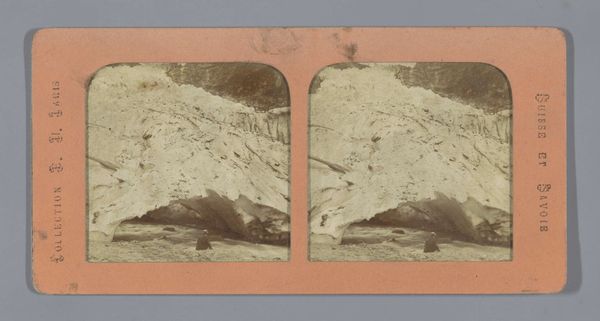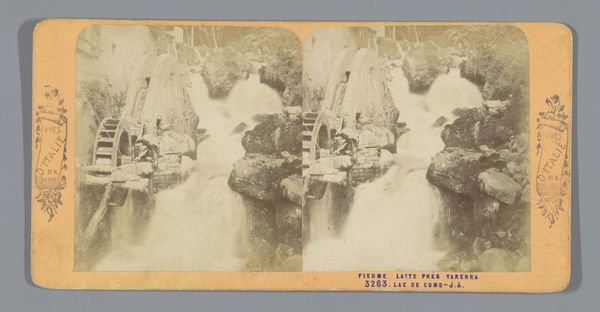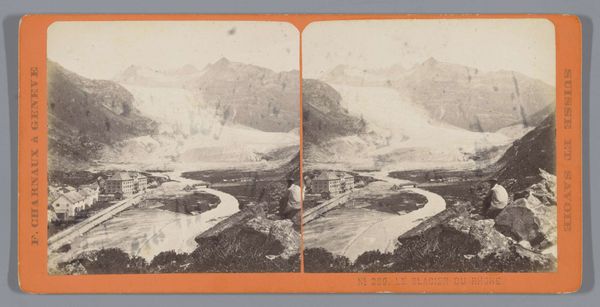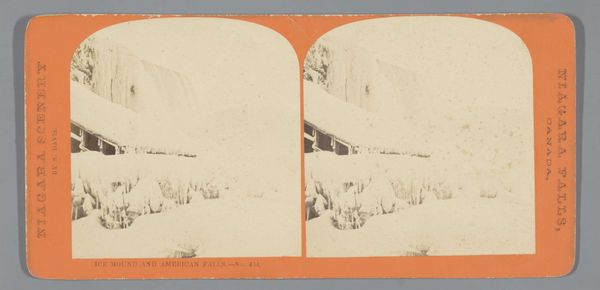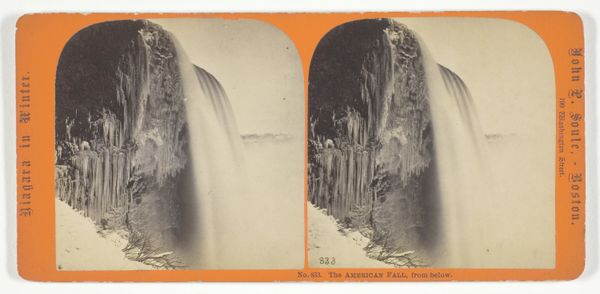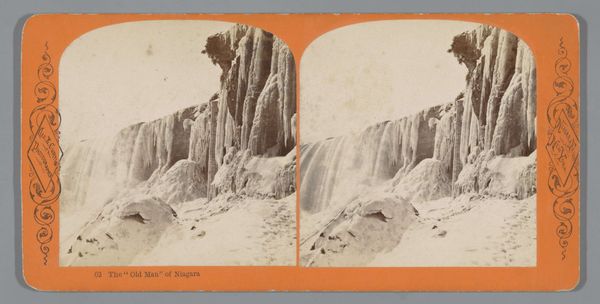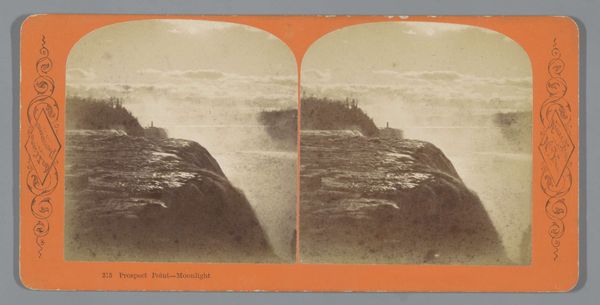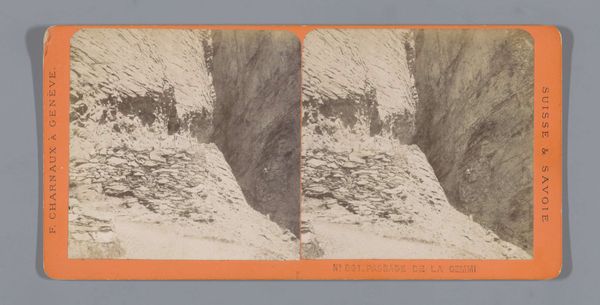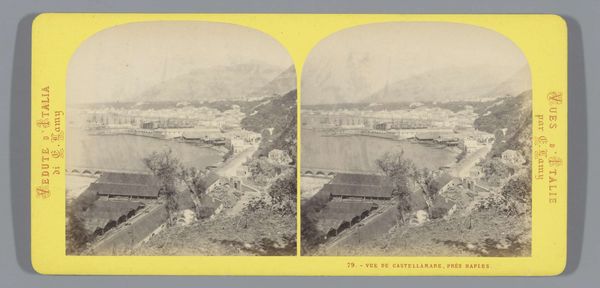
Dimensions: height 86 mm, width 176 mm
Copyright: Rijks Museum: Open Domain
Editor: This stereograph, "Niagarawatervallen vanaf de Niagara Clifton Brug," or Niagara Falls from the Niagara Clifton Bridge, by George Barker, sometime between 1869 and 1889, presents us with a double vision of the iconic falls. The sepia tones and almost ethereal mist lend it a romantic, yet slightly melancholic air. What symbolic weight do you find embedded in this popular image of Niagara Falls? Curator: The falls themselves have always represented power, both natural and spiritual, for various cultures. Consider the Indigenous peoples who revered these waters. But with Barker's photograph, we also see the advent of tourism, the “taming” of nature through the lens of the camera. Does the bridge itself strike you as a symbol of this conquest? Editor: Absolutely. It's a structure imposed upon the landscape, facilitating our access and experience. Is there also perhaps a religious element, maybe the sublime experience diminished into consumerism? Curator: That's insightful. The "sublime" was often associated with the divine, with the experience of awe and terror in the face of nature's grandeur. By capturing it, packaging it for mass consumption, are we diminishing its power? Or perhaps offering a different kind of spiritual access, a democratized sublime for the Victorian era? Editor: A democratized sublime... that's a fascinating way to put it! So, Barker’s photo becomes a symbol not just of nature's power, but of the shifting ways we relate to that power through technology and cultural change. Curator: Precisely. The photograph speaks to the evolving relationship between humanity, nature, and the tools we use to understand it. It’s a powerful visual reminder of how our cultural symbols change and adapt over time.
Comments
No comments
Be the first to comment and join the conversation on the ultimate creative platform.
